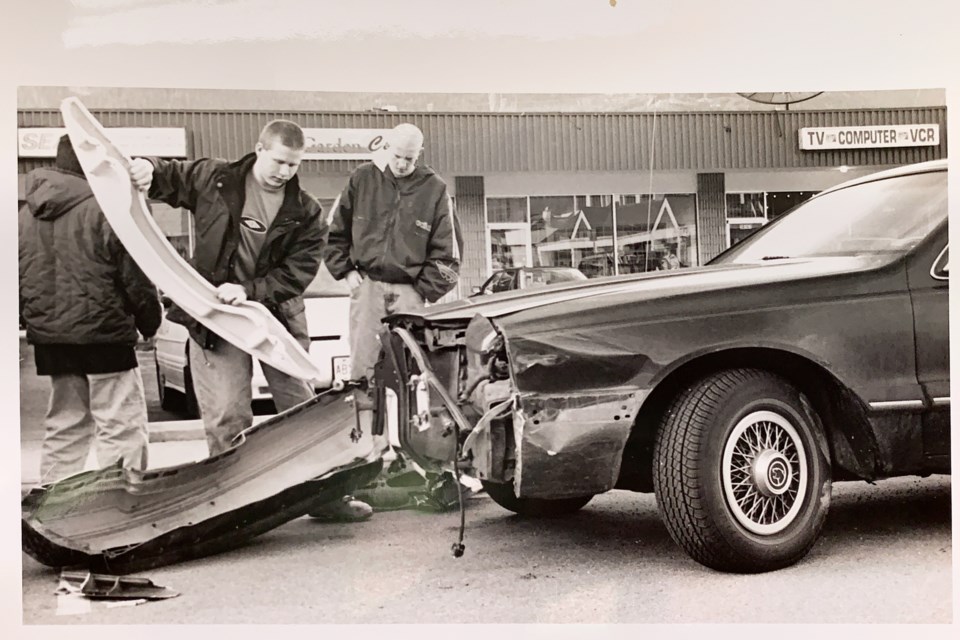Our newsroom has been digging through the paper’s photo archives from the 1990s. Seeing some folks we know back in the day has been entertaining. It is also fascinating to see how much has changed in the landscape and culture since then.
One striking thing for our team was the extensive collection of published vehicle collision photos.
This isn’t a 90s thing. Photo archives at the show car crashes back as long as there have been vehicles.
The Squamish Chief photographers were on the scene, from landslides with lost souls to vehicle crashes.
We still head to the scene, but a few things have changed.
For one, there were more staff — including a dedicated photographer — to send out, so we have fewer such photos these days in community papers.
Also, every newsroom had a scanner that listened in on police calls. Today, those calls are encrypted, so we don’t hear about such things as quickly.
But something else has changed too, and that is you, dear reader.
These days, every single time we do our jobs as it has always been done and publish such photos, there is inevitable pushback from a few readers aghast that we showed a crumpled car or accident scene.
Let’s get into it here and now while, thankfully, there isn’t a recent situation in Squamish to debate, and while emotions aren’t as high.
Of course, there are journalistic standards we follow in Canada. (Though these can be very different in other countries.)
We don’t show a person injured. We don’t show blood, and we don’t show covered bodies, typically.
But, when able, we firmly hold on to our right — obligation — to show images of collisions and other calamities.
Of course, no one likes to imagine our loved ones being in a crash, for example, and that painful incident all over the internet.
So why do we do it?
A recent decision by the illustrates our point best.
This is Canada’s self-regulatory body for news media.
There was a complaint about using sensitive photographs in the Oct. 3, 2022, article, “Fatality reported in weekend Highway 17 crash,” published by the outlet SooToday.
Aerial photographs that accompanied the article about a three-vehicle collision that resulted in the death of an 81-year-old man showed the damaged vehicles and first responders at the scene of the accident.
A relative argued that the images were insensitive and requested that they be removed from the story. She was most concerned that some of the photos showed part of a sheet over the victim.
The Council dismissed the complaint.
The NNC noted that “photographs are powerful tools that can serve to educate readers about the impact of a particular event. In cases of car accidents, they may also provide cautionary accounts or indicate the need for better safety measures,” the decision reads.
In the case of media in the Sea to Sky Corridor, this statement packs even more punch.
A highway cuts through our town. It is vital the impact of it is clear, and it is our job to show it, best we can.
But back to this particular decision.
The photos were not graphic and did not identify the victim.
“We understand that individuals close to victims will undoubtedly have a difficult time reading about or viewing photos of the events that led to their deaths. However, given the angle and distance at which the photographs were taken in this case, it is the view of the NNC that the images adhere to widely accepted journalistic standards.”
While it is not a part of the job we relish — such scenes often leave reporters shaken — it is a historic and necessary one.
